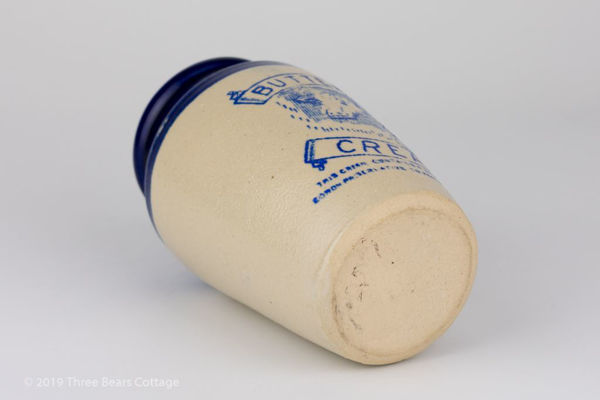

3-bay commercial and domestic building with circa 1900 tiled shopfront retained at ground.

It is well worth keeping an eye open for these gorgeous shopfronts whilst exploring Scotland’s historic towns.Early-mid 19th century, 2-storey and attic. A dark green tiled counter front, decorated with the Buttercup monogram, is displayed in the People’s Palace Museum, Glasgow. Denny retains some original shelving units with a buttercup pattern adorning the uprights. Shop interiors were reportedly clad in white tiles with green borders, though the surviving interior of the Buttercup Dairy in Denny, Stirlingshire, has painted tongue and groove panelling. Buttercup garlands and swags reappeared in transom lights at the branch in Warrender Park Road and can be seen on hanging signs in old photographs.
BUTTERCUP DAIRY WINDOWS
Templeton shops) and in the heart motifs which adorned the iron grilles that closed lobbies and protected windows at night (see Warrender Park Road and Haddington), as well as featuring in the tiles. The arts and crafts tradition was reflected in the chequered borders (also favoured by early R. It would have proved impossible to maintain – in terms of craftsmanship, materials and sheer expense – had Buttercup continued to expand and modernise after the Second World War.Ĭairns carefully considered every aspect of Buttercup’s shop design, creating a cohesive aesthetic effect by using a predominantly green, yellow and white palette, and by repeating decorative motifs in different materials. Once established, the house style was adhered to throughout the life of the chain. It must have been introduced after Cairns started independent practice in 1908, most probably around 1915, when he became involved in designing Buttercup’s Leith headquarters.

At least 23 shops survive in Scottish towns in a recognisable form.Įdwardian photographs, for example of the relatively plain Kirkintilloch branch of 1906, show that the house style was not imposed at the outset. The last shop closed in Edinburgh in 1965.īuttercup Dairy shops were designed by the architect James Davidson Cairns (1866-1947), who was also responsible for the firm’s offices, warehouses and farm buildings. The cold store in Leith was now the company’s greatest asset, prompting its purchase by Christian Salvesen Ltd.

Over 170 shops had been disposed of by 1951, and just four remained by 1961. In Arbroath, Mary White took over the branch she managed at 5 Keptie Street, whilst 193 High Street was taken on by Scott’s, a neighbouring grocer who turned it into an experimental self-service extension. Some were acquired by their managers, others by local retailers, or even banks. Wartime shortages and rationing simply aggravated an already dire situation and in 1948 the remaining 207 shops were put up for sale or lease. Over the next six years around 40 retail branches were closed. By the mid-1930s the shops were struggling, and in 1936 fire destroyed the hatchery at Clermiston Mains, bringing an end to the poultry farm. and Home & Colonial Stores, both of whom tried to acquire the Buttercup Dairy Co. It may have been a mistake to turn down offers from the Meadow Dairy Co. Eggs laid on the Sabbath were donated to hospitals and charities.Įwing’s philanthropic nature, inspired by his religious beliefs, seems to have adversely affected the financial health of his business, which became encumbered by bank loans. In that year Buttercup became a private limited company and purchased a farm called Clermiston Mains at Corstorphine, Edinburgh, as the site of a huge poultry farm where eggs were produced on an industrial scale. Although a poultry shed – with display windows facing the street – existed on Easter Road, most of the eggs sold by the company were imported until 1922. Initially Buttercup sold a restricted range of products: eggs, butter, margarine, cream, tea, cooking fat and milk.


 0 kommentar(er)
0 kommentar(er)
